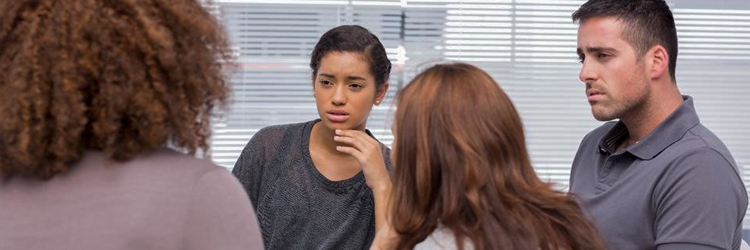If you’re planning to get a divorce and you have children, you should consider collaborative divorce as an option. There are many great reasons for choosing the collaborative route, starting with your need to prepare for a co-parenting relationship with your soon-to-be ex-spouse.
If you go through a traditional divorce that does not involve any children, once it is finalized and your spouse becomes your former spouse, you don’t have to ever interact with that person again, if you so choose. The traditional divorce process will be primarily focused on the division of assets and debts between the parties.
For divorcing couples with children, though, you and your former spouse will still share the responsibility of raising your children. This requires communication about all kinds of matters, from medical bills to after-school activities to summer vacation plans.
The collaborative law process can serve as a metaphor for your future dealings as co-parents, and it can set the tone for balanced discussion and effective negotiation when working through difficult issues. If parents are able to work through their issues without heavy litigation and fighting in court, they can establish a process for dealing with the parenting issues that might come their way after divorce. If parties are able to work through their uncoupling in a way that’s not divisive and damaging, co-parenting begins from a much better place. The collaborative process is one that, by its very nature, helps the parties to focus on the well-being and emotional health of their children.
Collaborative law, to be clear, isn’t just for couples who agree on everything. Couples can and do work through difficult issues that, at the outset, are the source of sharp disagreements. The main difference between a collaborative divorce and a traditional litigated divorce is that the couple negotiates their decree without taking it to court. The collaborative process helps couples to retain one of the most crucial factors that can often be lost in the divorce process: control over their future.
In a collaborative divorce, each spouse has a lawyer representing his or her interests, but the lawyers are committed, through a binding agreement, to a process of resolving the case without going to court. In fact, if the couple decides they can’t come to agreement and seek litigation, each spouse must get a new lawyer to tackle the litigation phase of their dispute.
But collaboration doesn’t mean capitulation. I encourage each collaborative client of mine, at the outset of the case, to make a distinction between their positions and their interests. This may seem like a simple task, but it is often difficult to differentiate between a specific item that a client requests (a position) and the motivating desire or fear behind that item (interest). Knowing these motivating factors and assisting a client to articulate what may be influencing their own choices is a powerful tool. It allows us a degree of flexibility as we look for solutions, and to do so in a way that honor what both parties have expressed that they want, and champions the best interests of the children involved.
Collaborative divorce allows for this same flexibility in devising parenting plans that work best for the children and their parents. The standard plan issued in many litigated cases may work for your situation, but it might not, or it might not be ideal. Collaborative divorce allows the two of you, as co-parents, to create as ideal a situation for your children as possible.
Collaborative divorce also is better suited to the busy lives of parents. The divorce happens on your schedule, in an office, rather than in a courtroom where the court sets the time and place and tells you when to be there. It’s also a process that protects privacy and confidentiality.
And, again, the process gives you something I believe is crucial when it comes to a divorce with children: It puts the focus on their needs. It allows you to develop a workable solution going forward, first and foremost–your goal is to move as seamlessly as possible into that co-parenting role with the uncertainty of divorce behind you.
Also, if you find that a parenting plan that may have worked great at the time of the divorce has become too rigid or otherwise flawed a few years down the road, you have a co-parenting relationship, forged in the collaborative process, that allows the two of you to work out a solution better suited for your new situation.
If collaborative divorce sounds like what you’re looking for to help you and your children through a divorce, please contact the Law Office of Lisa Vance to set up a time to meet with me. I’d love to answer your questions and talk to you about how to get started.

